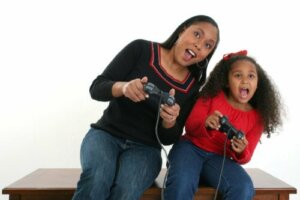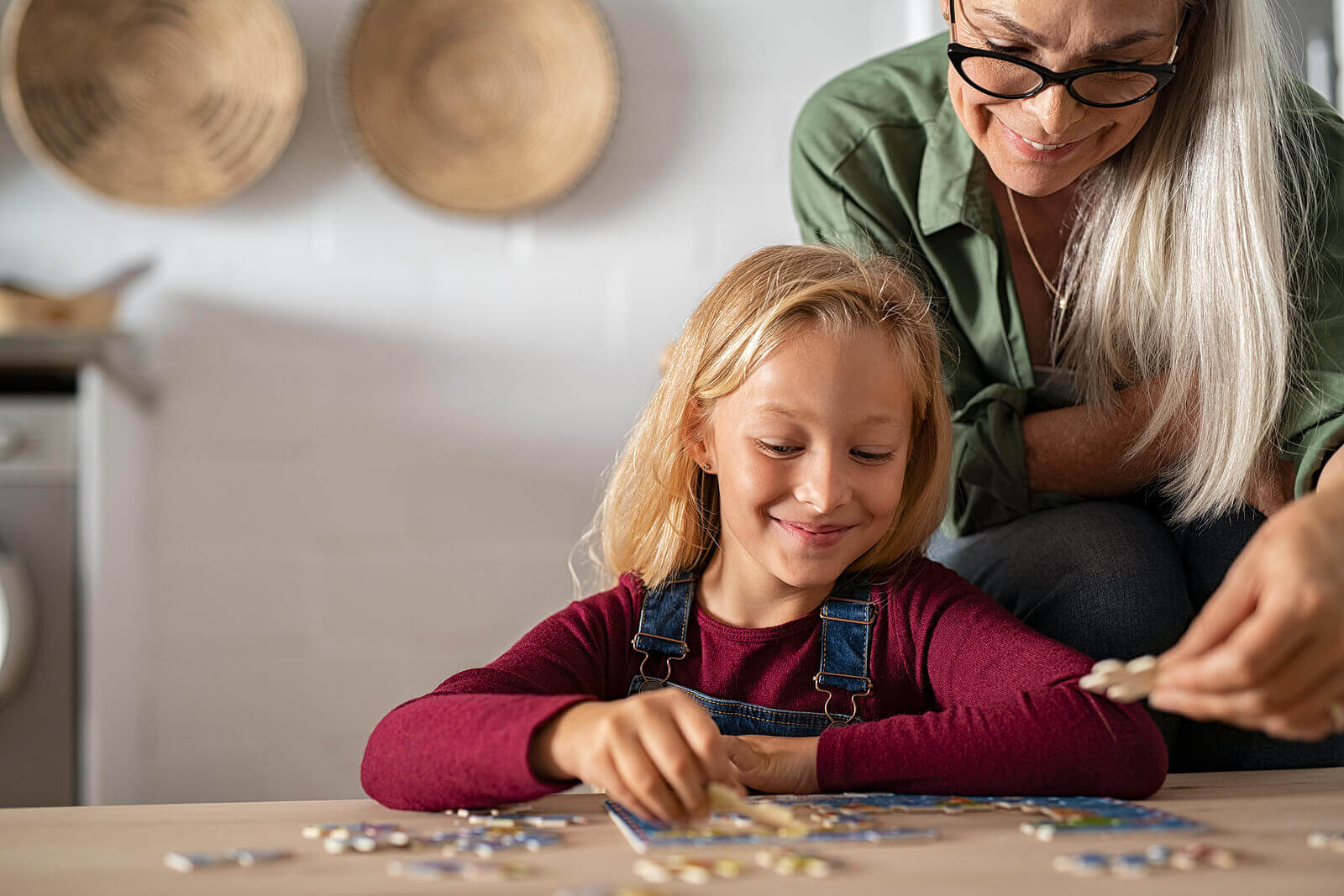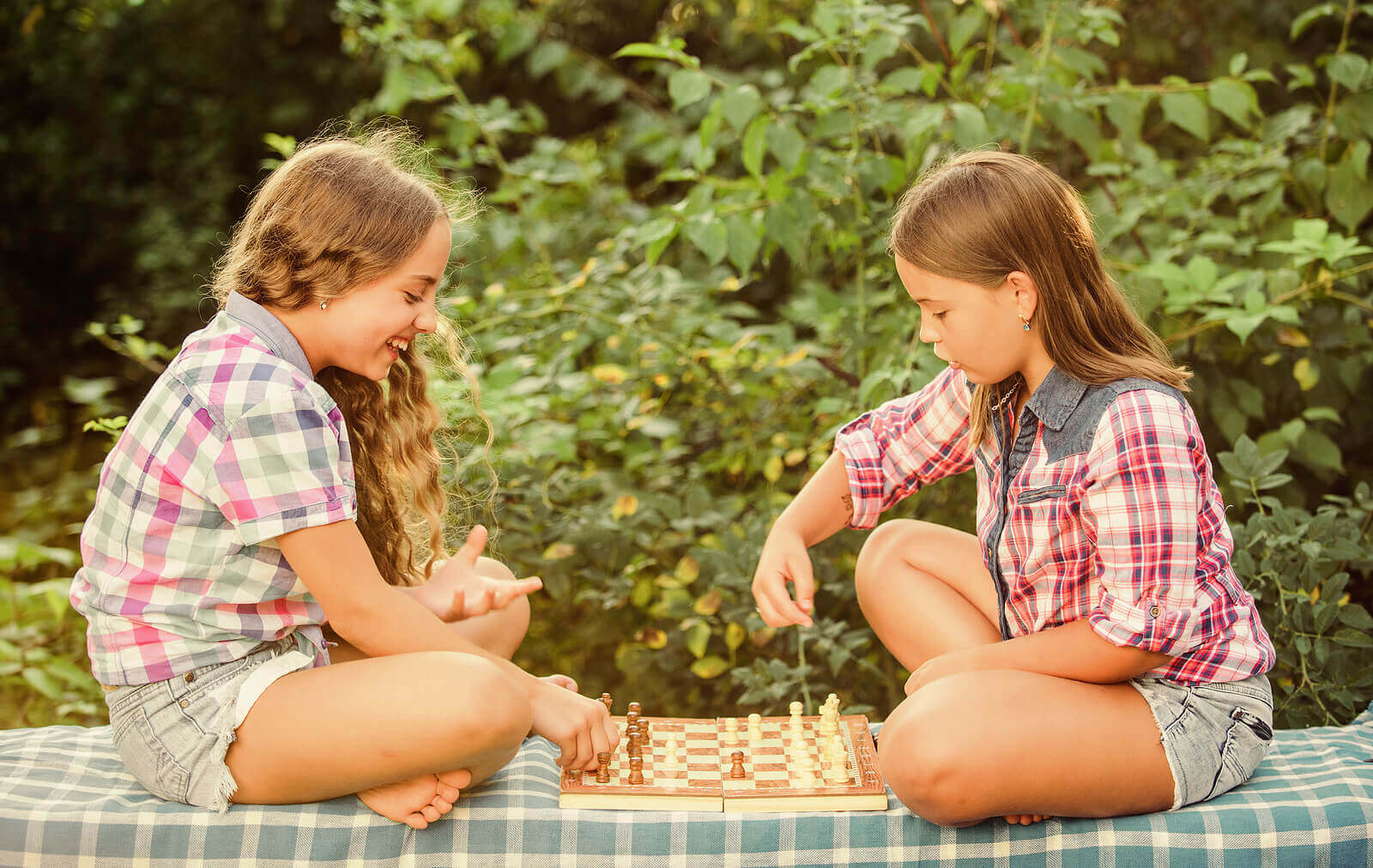Spatial Intelligence in Children: How to Identify and Develop It

The ability to identify yourself and different objects in a space is a signal of good spatial intelligence. But, what is it exactly?
Spatial intelligence is defined as the ability to understand space and its characteristics. In addition, it’s a skill that is easy to identify. For example, when you put together a jigsaw puzzle, when you remember images or recognize objects, like car models. In these cases, the priority is to process images before words.
“Spatial intelligence provides the ability to think in three dimensions. It also allows the individual to perceive, recreate, transform and modify external and internal images. Plus, it enables individuals to go through a space, move objects, create and process graphic information.”
– L. Campbell –
In fact, experts state that this has nothing to do with sensory stimuli from the images. In contrast, they relate this to the “mind’s eye”, which understands images and transforms them into drawings, ideas, objects and creations. Thus, an architect visualizes a building that doesn’t exist, or a sculptor sees a shape in a piece of marble.

When children develop good spatial intelligence, they’ll probably do well in STEAM fields (science, technology, engineering, art and mathematics).
Spatial intelligence in children: how to identify it
Have you noticed that your children orient themselves easily? Do they like to build things and they do it really well? This is because they have developed good spatial intelligence. Therefore, they have a special understanding of visual information and space dimensions.
Following this idea, children with good development of spatial ability share certain characteristics. The following are the most important ones:
- Great observation skills.
- Good orientation.
- They enjoy drawing, designing and building.
- Abilities to put jigsaw puzzles together and solve mazes.
- Special abilities to read maps, designs and graphics.
- They’re good at playing video games.
- They love weird devices and objects, and get curious about their functioning.
- Abilities to assemble, dismantle and invent objects.
Can you improve or increase spatial intelligence?
There are many activities that help children improve the development of spatial intelligence. Next, we’ll mention some activities children can do at school or at home:
Play video games
Video games improve visual attention and mental rotation skills. This refers to the ability to understand an object from different perspectives.
Create collages
Cut magazines, papers, photos, etc. into pieces. Then, ask your children to make a collage over a piece of cardboard. Finally, this collage should express a balanced message.
Build with blocks
Using blocks to build things is a magical process that promotes spatial intelligence development. As a result, children will get to see how something flat becomes a 3-dimensional object.
Use spatial language
Talk to your children about spatial locations using vocabulary related to the subject. This will make them more interested and motivated to participate.
Therefore, you should use spatial language to help the little ones develop spatial intelligence, and think in 3 dimensions. For example, replace neutral words, like “here” and “there” by more specific words, like “above”, “below”, “between”, “near” and “far.” Later, you’ll see how children start using these words and locating objects more easily.
Do crafts and plastic arts
Plastic arts, like drawing, painting and sculpting, make children transfer a mental image to a 2- or 3- dimensional object. Furthermore, these activities include crafts, especially the ones that involve recycled objects. This will be particularly important because it makes children create a new object from an old one.
Imagine mental roads to improve the development of spatial intelligence
The memory palace games are quite effective to improve the development of spatial intelligence. To do this, you have to imagine you’re walking around your house, going through the different rooms and remembering the location of the different objects. After doing this, you’ll remember things more easily.
Play chess
Creating chess strategies is a skill of spatial intelligence, because you need to visualize what happens to the board after a certain move. By doing this, you get to choose the best move.

Putting puzzles together
Real or virtual puzzles can become a really fun way to improve the development of spatial intelligence. Even the Rubik’s cube could be a very good choice for children.
Draw sketches to increase spatial intelligence
Since children love drawing, you should make use of it by teaching them to draw sketches or designs of their bedroom, house, school, etc. In addition, they can practice drawing using different perspectives.
Multiple intelligences
After Dr. Howard Gardner suggested the idea of multiple intelligences in 1983, science recognized that there are different dimensions that intervene in every person’s development.
This theory states that every person has different intelligences, which relate to certain concepts: intellectual, spiritual, natural, physical, linguistic, logical, artistic, social and spatial concepts. However, since every individual is unique, the combination of these intelligences will be different depending on each case.
In conclusion, it’s important to guide children to develop their intelligences, by respecting their individuality. This includes spatial intelligence, which will be very useful to improve their performance at school and in their personal lives.
The ability to identify yourself and different objects in a space is a signal of good spatial intelligence. But, what is it exactly?
Spatial intelligence is defined as the ability to understand space and its characteristics. In addition, it’s a skill that is easy to identify. For example, when you put together a jigsaw puzzle, when you remember images or recognize objects, like car models. In these cases, the priority is to process images before words.
“Spatial intelligence provides the ability to think in three dimensions. It also allows the individual to perceive, recreate, transform and modify external and internal images. Plus, it enables individuals to go through a space, move objects, create and process graphic information.”
– L. Campbell –
In fact, experts state that this has nothing to do with sensory stimuli from the images. In contrast, they relate this to the “mind’s eye”, which understands images and transforms them into drawings, ideas, objects and creations. Thus, an architect visualizes a building that doesn’t exist, or a sculptor sees a shape in a piece of marble.

When children develop good spatial intelligence, they’ll probably do well in STEAM fields (science, technology, engineering, art and mathematics).
Spatial intelligence in children: how to identify it
Have you noticed that your children orient themselves easily? Do they like to build things and they do it really well? This is because they have developed good spatial intelligence. Therefore, they have a special understanding of visual information and space dimensions.
Following this idea, children with good development of spatial ability share certain characteristics. The following are the most important ones:
- Great observation skills.
- Good orientation.
- They enjoy drawing, designing and building.
- Abilities to put jigsaw puzzles together and solve mazes.
- Special abilities to read maps, designs and graphics.
- They’re good at playing video games.
- They love weird devices and objects, and get curious about their functioning.
- Abilities to assemble, dismantle and invent objects.
Can you improve or increase spatial intelligence?
There are many activities that help children improve the development of spatial intelligence. Next, we’ll mention some activities children can do at school or at home:
Play video games
Video games improve visual attention and mental rotation skills. This refers to the ability to understand an object from different perspectives.
Create collages
Cut magazines, papers, photos, etc. into pieces. Then, ask your children to make a collage over a piece of cardboard. Finally, this collage should express a balanced message.
Build with blocks
Using blocks to build things is a magical process that promotes spatial intelligence development. As a result, children will get to see how something flat becomes a 3-dimensional object.
Use spatial language
Talk to your children about spatial locations using vocabulary related to the subject. This will make them more interested and motivated to participate.
Therefore, you should use spatial language to help the little ones develop spatial intelligence, and think in 3 dimensions. For example, replace neutral words, like “here” and “there” by more specific words, like “above”, “below”, “between”, “near” and “far.” Later, you’ll see how children start using these words and locating objects more easily.
Do crafts and plastic arts
Plastic arts, like drawing, painting and sculpting, make children transfer a mental image to a 2- or 3- dimensional object. Furthermore, these activities include crafts, especially the ones that involve recycled objects. This will be particularly important because it makes children create a new object from an old one.
Imagine mental roads to improve the development of spatial intelligence
The memory palace games are quite effective to improve the development of spatial intelligence. To do this, you have to imagine you’re walking around your house, going through the different rooms and remembering the location of the different objects. After doing this, you’ll remember things more easily.
Play chess
Creating chess strategies is a skill of spatial intelligence, because you need to visualize what happens to the board after a certain move. By doing this, you get to choose the best move.

Putting puzzles together
Real or virtual puzzles can become a really fun way to improve the development of spatial intelligence. Even the Rubik’s cube could be a very good choice for children.
Draw sketches to increase spatial intelligence
Since children love drawing, you should make use of it by teaching them to draw sketches or designs of their bedroom, house, school, etc. In addition, they can practice drawing using different perspectives.
Multiple intelligences
After Dr. Howard Gardner suggested the idea of multiple intelligences in 1983, science recognized that there are different dimensions that intervene in every person’s development.
This theory states that every person has different intelligences, which relate to certain concepts: intellectual, spiritual, natural, physical, linguistic, logical, artistic, social and spatial concepts. However, since every individual is unique, the combination of these intelligences will be different depending on each case.
In conclusion, it’s important to guide children to develop their intelligences, by respecting their individuality. This includes spatial intelligence, which will be very useful to improve their performance at school and in their personal lives.
All cited sources were thoroughly reviewed by our team to ensure their quality, reliability, currency, and validity. The bibliography of this article was considered reliable and of academic or scientific accuracy.
- PLATAFORMA DE ARQUITECTURA: https://www.plataformaarquitectura.cl/cl/867514/9-actividades-diarias-para-aumentar-tu-inteligencia-espacial
- PROYECTO EDUCATIVO MALALA: http://proyectomalala.beecocentric.com/?page_id=1616
- UNIR MEXICO: https://mexico.unir.net/vive-unir/howard-gardner-inteligencias-multiples-creatividad/
- Campbell, L., Campbell, B.,y Dickenson, D. (2002). Inteligencias múltiples. Usos prácticos para la enseñanza y el aprendizaje. Buenos Aires, Argentina.
This text is provided for informational purposes only and does not replace consultation with a professional. If in doubt, consult your specialist.








